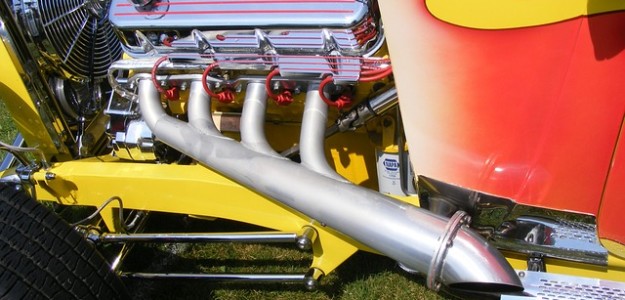
Your automotive exhaust system should always be kept in a good working condition for many reasons. For instance, it's important for estimating fuel mileage, ensuring the safety of your occupants, and also it's also eco-friendly. Here's what you need to know about your
automotive exhaust system, how it works and all the various parts.
How Do They Work? The combustion chambers burn air and fuel thus releasing gases, which come out through the exhaust system. Note that these gases are harmful to the environment and humans. It's prudent to perform maintenance checks on your exhaust system to make sure everything is working as it should. These maintenance checks involve checking for holes in the exhaust pipe. Also don’t forget to look for any leaks in the passenger compartments. If any of these issues are present, it’s important to reseal the leakages to keep all the occupants of the vehicle safe.
Parts Of The Automotive Exhaust System 1. Exhaust Manifold Depending on the vehicle, the exhaust manifold can be manufactured from aluminum, steel, cast iron, or stainless steel. It's attached to the cylinder head, which then combines all of the cylinders' exhaust into one or two pipes.
2. Oxygen Sensor Just as the name suggests, the oxygen sensor measures the amount of oxygen present in the exhaust system. With this information it's easy to economize fuel usage by using the correct mixtures. The oxygen sensor is located close to the exhaust manifold.
3. Catalytic Converter The catalytic converter resembles a muffler in appearance. It's useful for the conversion of carbon monoxide to carbon dioxide and hydrocarbons to water. Some converters help in reducing any harmful nitrogen oxide gases in the exhaust system. It's located between the muffler and the exhaust manifold.
4. Muffler The purpose of the muffler is to reduce the noise produced by the exhaust system. The combustion process consists of various explosions, which are bound to produce a lot of noise. Mufflers use baffles, which bounce around the exhaust gases to dissipate any energy that reducing the noise produced. Other mufflers have fiberglass packing to absorb any sounds produced when the gases flow through the exhaust pipe.
5. Exhaust Pipe This carries out the gases through the tail pipe at the back of the vehicle. The tubing is manufactured from steel, stainless steel or aluminized steel. The stainless steel has a higher corrosion resistance than the others. Aluminized steel is less expensive, has a higher corrosion resistance than the normal steel, and thus it's more popular.
Common Maintenance And Repair Problems First, you should beware of corrosion, which appears as rust. It's caused when any moisture reacts with the iron thus forming iron oxide. The moisture comes up as a result of combustion. It can also get inside the exhaust pipe from external sources. If you commonly take short trips with your vehicle, your exhaust system might become less durable. When the engine is shut off, any water vapor becomes liquid. Therefore, when you take a short drive the water doesn't turn back into vapor possibly rusting the exhaust system. After washing your vehicle, you should run the engine for a while to dry out all the pipes and prevent the chance of corrosion. If your fuel mileage has reduced considerably, the oxygen sensor could be having issues. After a while, it becomes less accurate thus creating the wrong estimation of fuel mixture. As a result, the engine uses more fuel than it's supposed to be doing. When the "Check Engine" light is on, it's may be because the oxygen sensor has failed. In conclusion, it's prudent to have one of our highly-trained mechanics check the exhaust system frequently to make sure it's working as it should. Give us a call and come in for free exhaust inspection today!
Book An Appointment